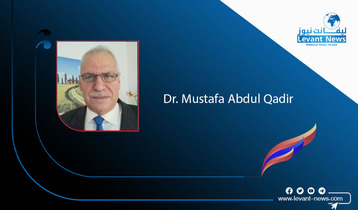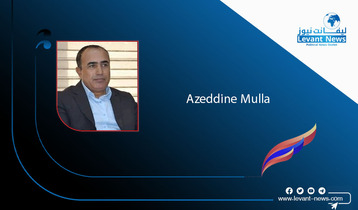-
Afghanistan: One Year On

This week the Taliban held military parades and a big gathering in Kandahar to mark their first year in charge of the country. Few will forget their sudden and surprising victory last August with the images of chaos at Kabul airport and the tragedy of those falling from American planes rushing to leave before the Taliban arrived, but what has the last twelve months meant for the country of some 40 million?
Contrary to the hopes of optimists, no “Taliban 2.0” has emerged. The regime hasn’t really reformed, and is as hardline as it was when it ruled the country from 1996 to 2001. Over twenty years since the US invasion the fundamental tenants of the Taliban’s legitimacy served it well for taking back control of the country. An anti-occupation campaign underpinned by religion won it Afghanistan, but the leadership always must shore themselves up against more radical elements hence the continued draconian approach.
The Taliban have not forgotten the legacy of the American supported Government in Kabul and more than a quarter of translators who helped the United States military in Afghanistan say they or their family members have faced direct threats from the Taliban within the past month alone. Back in the US the chaos of the Afghanistan withdrawal saw President Biden’s polling plummet despite the Democrats arguing that the genesis of events was linked to the former U.S. President Donald Trump signing a withdrawal agreement with the Taliban in 2020, before total collapse erupted last August into scenes of desperation and almost unimaginable tragedy.
The return of the Taliban has seen them frozen from the international banking and financial systems, collapsing the economy and plunging the country into poverty. Six months after the American withdrawal, GDP fell by a third. Now, Afghanistan is near universal poverty and starvation. Some 24 million Afghans need humanitarian assistance today including almost 10 million Afghan children who are going hungry.
Economic conditions have been exacerbated by drought, the wider effects of climate change and individual cases of disaster such as the earthquake in eastern Afghanistan that killed over a thousand people in June. The conditions for ethnic minorities have worsened as it has for women. Indeed, Amnesty put out a report accusing the Taliban of having “decimated the rights of women and girls in Afghanistan”. Activists have counted thirty separate restrictions on the lives of women.
Despite the collapsing economy the leadership of the Taliban have been propped up by the flow of illegal drugs, now including methamphetamine, economically benefitting the regime but not doing much good for anyone else.
The US originally invaded the country to stop it harbouring terrorists linked to the 9/11 attacks. It was almost ironic that only after they left were they able to locate and kill al-Qaeda leader Ayman al-Zawahiri in Kabul. Since the Taliban’s takeover of the Afghan government last August, the new regime has presented us with the same set of problems we faced in the 1990s, namely their support for and harbouring of terrorists.
The outlook is not entirely bleak, however. Indeed, it is important to recognise that there is a peace dividend to the Taliban’s time in power. Villagers who lived on the frontlines of the conflict, in provinces such as Helmand and Kandahar, are safer than they have been in years. A new report by International Crisis Group, a think-tank, suggests violent incidents in the ten months to mid-July were down 87% compared with the same period a year earlier.
Yet if the Taliban continue to run the country into the ground there is a real prospect not only of mass migration away from poverty and famine, but of a return to internal violence that predated the US invasion of 2001. “If everybody could find a way to leave Afghanistan, they would take it” said Soraya a former aid worker from Herat to the media. More than 6 million Afghans have already fled the country’s previous tragedies, the third-largest displaced population in the world.
The spectre of civil war of various forms and intensity has loomed large across decades of modern Afghan history, and most be assessed as a realistic prospect again for the future of the country and its beleaguered population.

BY: James Denselow
You May Also Like
Popular Posts
Caricature
BENEFIT Sponsors BuildHer...
- April 23, 2025
BENEFIT, the Kingdom’s innovator and leading company in Fintech and electronic financial transactions service, has sponsored the BuildHer CityHack 2025 Hackathon, a two-day event spearheaded by the College of Engineering and Technology at the Royal University for Women (RUW).
Aimed at secondary school students, the event brought together a distinguished group of academic professionals and technology experts to mentor and inspire young participants.
More than 100 high school students from across the Kingdom of Bahrain took part in the hackathon, which featured an intensive programme of training workshops and hands-on sessions. These activities were tailored to enhance participants’ critical thinking, collaborative problem-solving, and team-building capabilities, while also encouraging the development of practical and sustainable solutions to contemporary challenges using modern technological tools.
BENEFIT’s Chief Executive Mr. Abdulwahed AlJanahi, commented: “Our support for this educational hackathon reflects our long-term strategic vision to nurture the talents of emerging national youth and empower the next generation of accomplished female leaders in technology. By fostering creativity and innovation, we aim to contribute meaningfully to Bahrain’s comprehensive development goals and align with the aspirations outlined in the Kingdom’s Vision 2030—an ambition in which BENEFIT plays a central role.”
Professor Riyadh Yousif Hamzah, President of the Royal University for Women, commented: “This initiative reflects our commitment to advancing women in STEM fields. We're cultivating a generation of creative, solution-driven female leaders who will drive national development. Our partnership with BENEFIT exemplifies the powerful synergy between academia and private sector in supporting educational innovation.”
Hanan Abdulla Hasan, Senior Manager, PR & Communication at BENEFIT, said: “We are honoured to collaborate with RUW in supporting this remarkable technology-focused event. It highlights our commitment to social responsibility, and our ongoing efforts to enhance the digital and innovation capabilities of young Bahraini women and foster their ability to harness technological tools in the service of a smarter, more sustainable future.”
For his part, Dr. Humam ElAgha, Acting Dean of the College of Engineering and Technology at the University, said: “BuildHer CityHack 2025 embodies our hands-on approach to education. By tackling real-world problems through creative thinking and sustainable solutions, we're preparing women to thrive in the knowledge economy – a cornerstone of the University's vision.”
opinion
Report
ads
Newsletter
Subscribe to our mailing list to get the new updates!





















